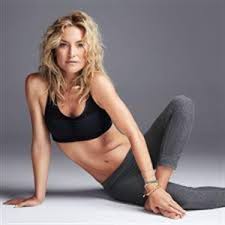Today I’m going to answer a great question I get asked often. Coach Kendra asks:
“I want to know the max healthy fat we can include in our meals. I hear some holistic gurus say they have 4 or more servings of coconut oil, almond butter, avocado etc in one meal! What’s the threshold for still burning body fat?”
Without writing yet another book on fat loss here, there are far too many variables to the above question for me to to just say, “3 tablespoons per meal”. There is however some great info to point you in the right direction and to explain why.
First of all how much fat you eat in any given meal (and still burn body fat) depends on quite a few things:
- What other macros are you eating at that meal. i.e. Protein, and carbs specifically
- Your overall calories for that day, week, month etc.
- How much muscle you have on your body (muscle is metabolic)
- How much body fat you currently have on your body. (the leaner you are, generally speaking the more fat you can handle – assuming you are lean due to your training and nutrition program)
- Is your body adjusted to burning fat as it’s main fuel source or is it running on mostly carbohydrates (all foods are generally broken down into “sugar” to be used, ketosis is the only proven way to actually get into burning body-fat with a few exceptions of course)
- Your personal genetic code which is unique to YOU – meaning some people can eat far more fat and still remain relatively lean….My understanding of “far more” and yours are probably two different things – so proceed with caution.
Next:
- Are any of these gurus men? Men will *always be able to eat more than women since they carry more muscle mass, have less estrogen & more testosterone as a gender. Do NOT compare yourself to a man. EVER. *as a rule of thumb…not god.
- We have no idea what these “gurus” do for their workouts or really anything else they do since what’s said on-line is not always what is happening in real life. 🙂
With the above out in the open let’s break this down a little bit more so you can have a clearer idea of how to move forward in your efforts to understand your fat threshold better.
My diet is balanced…now what?
If you are eating a pretty balanced diet of protein, fat, and carbs at each meal, the first place I’d look to is CARBS. Even eating the smallest amount compared to what we may be used to could still be too much for our bodies to dig into fat stores for fuel. So to start adding fat ad-lib because other gurus say to do it..or because your super fit best friend does it, may not be a great idea. Remember fat is the most calorically dense of all 3 macronutrients – and a teaspoon or tablespoon can go a LONG way for many of us.
Experiment 1. If you want to increase your daily fat but not gain the dreaded stuff, try cutting back deeply on your carbohydrate count in that meal. Please remember – fruit, any sugar alcohol and even vegetables still count very much on the carb scale. Count each gram of carbs and let your fat replace them by half. You also may want to cut back on your overall carb count for the whole day to be safe. (I would) *If you don’t know what sugar alcohols are – Google them.
Next I would increase my meals with lean protein (say .5 gram per lb of bodyweight) OR I would increase my fiber count from non-starchy vegetables. These are both great ways that a paleo or vegan person can lose fat while still eating whole foods that they “approve” of.
NOTE: Many people think that by eye-balling their plates or going by “hand measurements” they are right on point. While this is a GREAT place to start, if you have been doing this for a while and not getting the results you want, it’s probably time to start counting. I like the App “My Fitness Pal” for it’s ease of use AND because you can program your own macro goals for the day. A great one to practice is 40-30-30 or the “Zone”.

Kate Hudson watches her calories. (and exercises) She was eating too many cashews & couldn’t lose the last few lbs until she started counting her macros.
Calories: Are you Overeating or Under eating?
Going slightly off course here….While I agree wholeheartedly that most Americans are NOT under eating, once in a while women will not eat enough for fear of gaining weight. This is the bane of many honest hearted people trying to get results. While overeating will keep you from burning fat at a meal not to mention keep you from your body fat goal, not eating enough of the good stuff (usually protein or fiber) can also be a reason you aren’t reaching your goal. This is usually the issue with people who are exercising 5-6 days a week – pretty intense and NOT fueling properly.
A PERFECT example of this are clients who take 3 spin classes a week, go on power walks or jogs 3 x a week, but never venture over to the weights or take a BodyPump class at the gym. They have been doing this for YEARS on top of dieting yet they want results IMMEDIATELY when they cut out carbs. Big mistake. Remember: Dieting or restricting calories too much creates stress in your body. Don’t do either one to extreme. Push hard, but REST hard too.
Free Tip: For clients who are not overweight but just want to “tone up” I will suggest adding one protein shake to their current daily diet. Meaning 3 meals, a snack and a protein shake. Why? Because the added protein or possibly fat (if you are wanting more fat and less protein..here is the time) will give your liver the fuel it needs and prevent your body from burning up the protein you have on it…i.e. your muscles. A low carb protein shake (weather it’s vegan or whey based) will very often do the trick. Note: this tip is for people who are exercising regularly – REGULARLY! Not for those who workout once or twice a week or for two weeks on and one month off. That can get you fat. (Sorry, been there, done that)
Strength Train to increase fat threshold at meals
To enjoy more fat per meal and still stay in your “fat burning zone” you may want to focus on strength training with heavier weights if you aren’t already. Our muscles are are like sponges – they retain water, carbs and fat. The healthier (stronger) our muscle fibers are the faster they will uptake our nutrition. Practice a few (2 – 3) HIIT or Interval training cardio sessions a week. Keep these sessions around 15-30 min max. Notice I said 2 to 3. Don’t overdo it. Keep up your other fun activities, walking, hiking, riding bikes for fun as well. Yes I know “slow walking” is touted as a great way to burn fat and it is. It’s not your best bet if you are overeating or not working out hard enough in general the rest of the week though.

I highly doubt those are 3 – 5 lb weights. I’m guessing she squats, does push-ups, pull-ups and sprints among other things.
While we are on the topic of training: A common mistake I see in every gym are women not lifting heavy enough weights for fear of getting bulky. Can you get bulky? Yes, you can. Will you if you start lifting heavy? Not usually, especially if your diet is balanced and you don’t lift to failure. (This is an entire subject in and of itself that I won’t approach here) But if you want to get a leaner, tighter physique…consider 1-3 heavier weight training sessions per week for 3-4 months minimum.
To sum up: The “threshold for still burning body fat” while increasing your dietary fat per meal has do to with:
#1 Your overall calorie count for the day, week, month etc. Increasing your fat is fine if you are not overeating calories in general, specifically carbohydrates.
#2. Your macro balance i.e. ratio of carbohydrates. Sound like a broken record yet? Since carbs are are main source of fuel for most people, adding fat is tricky if you don’t take away some of those first. Eating fat and carbs in the same meal is not a great idea for burning fat accept in some very specific situations. Otherwise keep it low fat- moderate carb OR Low carb, moderate fat.
#3. How much muscle do you have / how lean are you right NOW. Most people who have a low body fat percent and who keep it there have been training and “dieting” for years. Not months. Three months can get some amazing results, but it’s the year in year out lifestyle that allows for a little more fat, slightly more calories or more treats to be enjoyed while still maintaining a “fat burning zone” chemistry.
#4. Try more fat! See for yourself first. Start adding more fat to your meals and see what happens. You will either stay fuller longer, maintain your weight or possibly lose weight if your body needs more fat. Conversely you may gain a little fat and know you have hit your limit. If you gain it you can lose it, it’s not the end of the world.
As you can see, there is not really a fixed maximum amount of fat per every meal because there are so many variables to look at first. There are however tools you can use to increase fat per meal and not gain it! There is no perfect diet. It doesn’t exist. Some diets may suit a specific need for a period of time, and be “perfect” for that goal. But as we change and grow, our diets should follow.
I hope this helps explain fats a little better & moves you onto better health, more fun with food & some new goals to set. Share this post to any of your friends who you think will benefit from reading it. Or don’t. I write cause I like it. 🙂